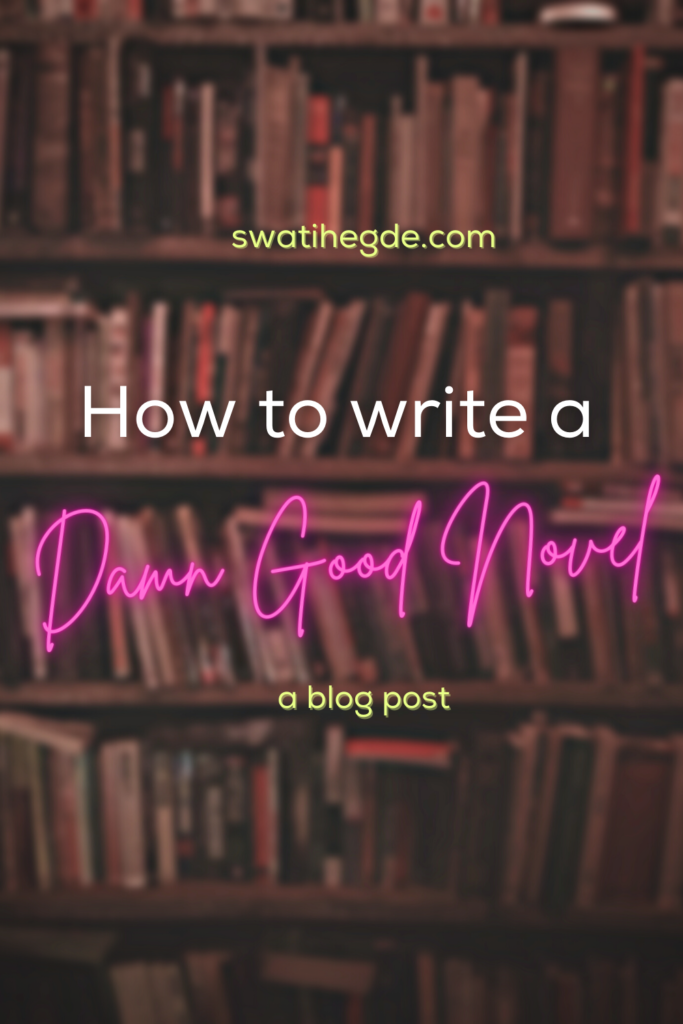
How To Write a Damn Good Novel: My Writing Process
My writing process is a little different from other authors–but it’s effective, efficient, and works wonders for me. Here’s some advice on how to write a damn good novel from scratch, my way, without having a breakdown (hopefully).

This was a highly requested blog post on Twitter, so of course I had to share it with you! So let’s talk about how this blog post will work: I’ll start with a background on how I write a novel from start to finish, and then offer some suggestions on how you can implement what I do, or find your own path.
Outlining & Synopses
So, first things first: I am not a plotter. I do not write book outlines or synopses before drafting. I have a general idea in my head of the story, the characters, and the ~vibes, of course, and that’s usually enough for me to start writing the very first scene.
But here’s the thing: I am also not a pantser. Even though I don’t do book or chapter outlines, I do write chapter/scene summaries (in 2 to 3 lines) a few chapters in advance. So if I’m writing chapter 2, I’ll likely have “briefly plotted” chapters 3 to 5 on some level. I also write query letters/book blurbs before I start drafting because this helps me set up the Goal, Motivation, Conflict for my main characters. [Read Susan Dennard’s post on GMC here]
Figure out what works for you. If plotting everything makes you anxious and frustrated, like it does for me, try pantsing a scene or two. Feeling stuck and confused? Experience the best of both worlds by plantsing, like me. This can also help you with writer’s block! [More tips on overcoming writer’s block here]
The ~Vibes
I usually create a moodboard or aesthetic for my novel on Canva before I start drafting, or at the very least, in the first few days of starting the first draft. I make sure to include pictures that show off the vibes of the plot or premise, my main characters, and the setting. Here’s a moodboard that I’m particularly proud of for the queer YA rom-com I’m midway into drafting.

The reason I recommend creating moodboards is because, as a life coach and NLP practitioner, I know that a lot of our subconscious processing happens visually. If you can see it in your mind’s eye, you can write it better. The catch is, a lot of authors struggle with writing descriptions and setting–I know I’m guilty of that! So creating a visual depiction of your story can help you unblock that part of your brain.
The Actual Drafting
Okay, I might scare you off now, because… *gulp* I don’t write sequentially. Yep. I’m a chaotic drafter! I start my first drafts with whichever scene is the most fun and exciting to write but also fleshed out in my head. Often, that’s the ending, epilogue, or the scene where my main character and love interest finally confess their love for each other. If I’m on chapter 5, I’ve likely already written chapter 15 or chapter 22, but I might have skipped one scene in chapter 4. Having a query letter or blurb really helps me draft out of sequence, because I already know what the stakes, conflict, and character arcs are without needing a full outline.
This might not work for you–I know not everyone can jump around scenes and chapters like this–but give it a try. This is another trick to eliminate writer’s block, because you’re essentially writing what feels natural, easy, and fun first without forcing the words out!
Finally, Revisions & Editing
After I’m done with the first draft, I reread the full manuscript. I make notes in the margins using Word’s comments feature, then I revise and edit until I have a second draft I’m proud of. Then, off it goes to my critique partners and beta readers!
Once I get their notes back, I let it simmer and stew for a day or two, because of course I’m going to be in denial that my wonderful book is anything but perfect (lol)! After I calm down and realize my CPs’ suggestions will actually help me make the book better, I create an editorial letter for myself, combining all the feedback I’ve received and highlighting similar comments and suggestions.
I first do a big picture edit, focusing on plot, subplots, and character arcs. Since I’m an under-writer, this often involves my adding anywhere between 5,000 to 20,000 words into the third draft. Finally, I finish off with a line and copy edit, making sure there are no plot holes, inconsistencies, or repetitive sentences.
For you, I will always recommend following this same revision process (as long as it feels good to you). Getting feedback from critique partners, beta readers, or editors (like me) is an absolute must. Your mother and best friend can’t be the only people reading your manuscript. Make sure your CPs are fellow authors or publishing professionals in your genre. Starting with big picture edits is important too because things will change on the sentence and page level, which means redoing all your micro-edits if you start with them first.
The Next Step
Now, if you have an agent or an editor, this would be when you’d send off your polished draft to them. If you don’t, you’d get ready for the query trenches. [Here’s a blog post to help you query agents!] Whether you’re still on your first draft or already ready for this next step, know that I’m SO proud of you. Writing is not easy and not always fun. But you’re doing it, and that means you’re successful already.
Thanks for reading! Feel free to share your writing process with me. Did any part of my writing process surprise you? Let me know in the comments below.
Love hard & dream big,

You May Also Like

How Do You Know It’s Time to Leave Your Literary Agent?
March 29, 2022
How I Signed With My (Second) Literary Agent
June 21, 2022

